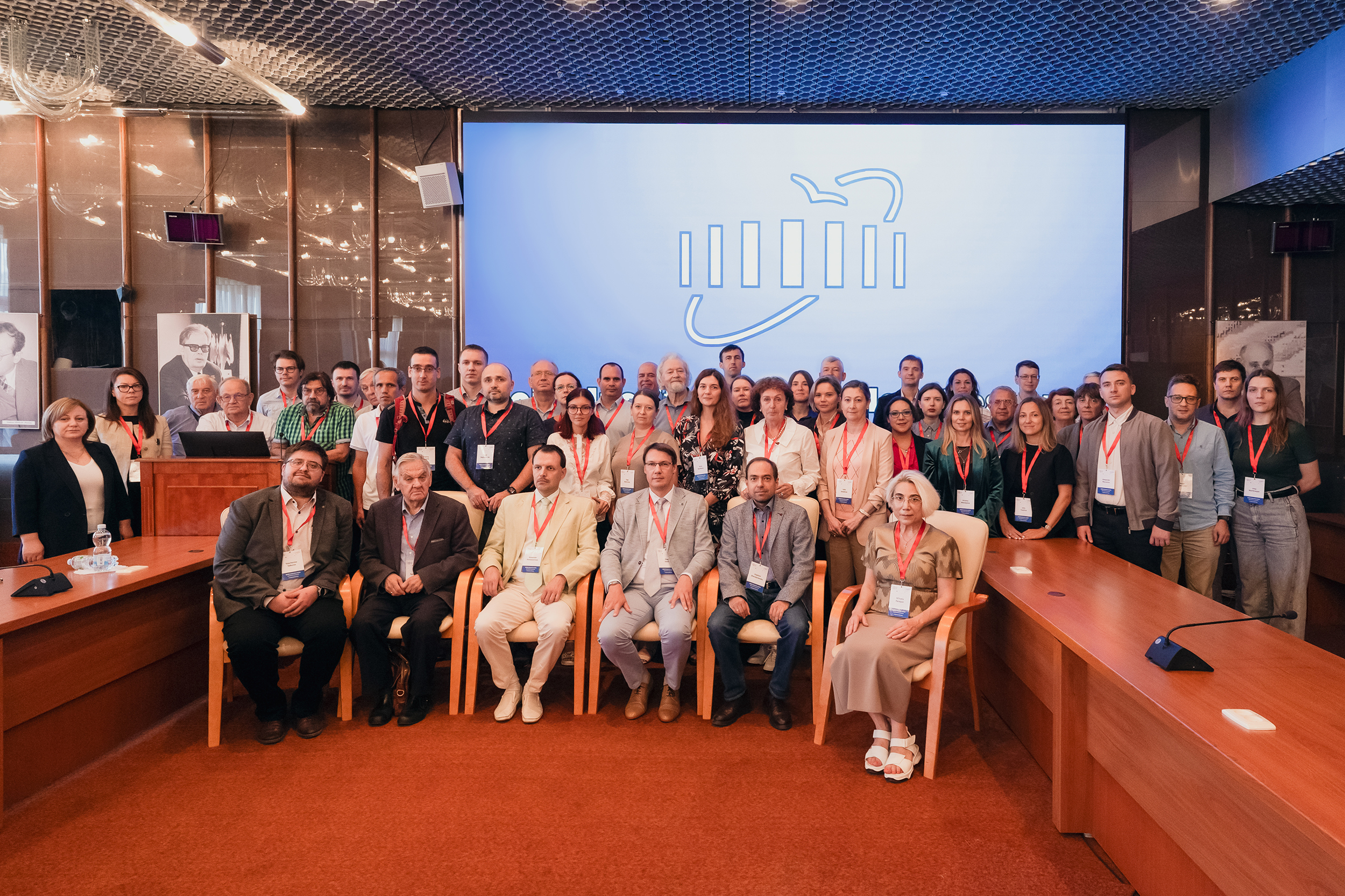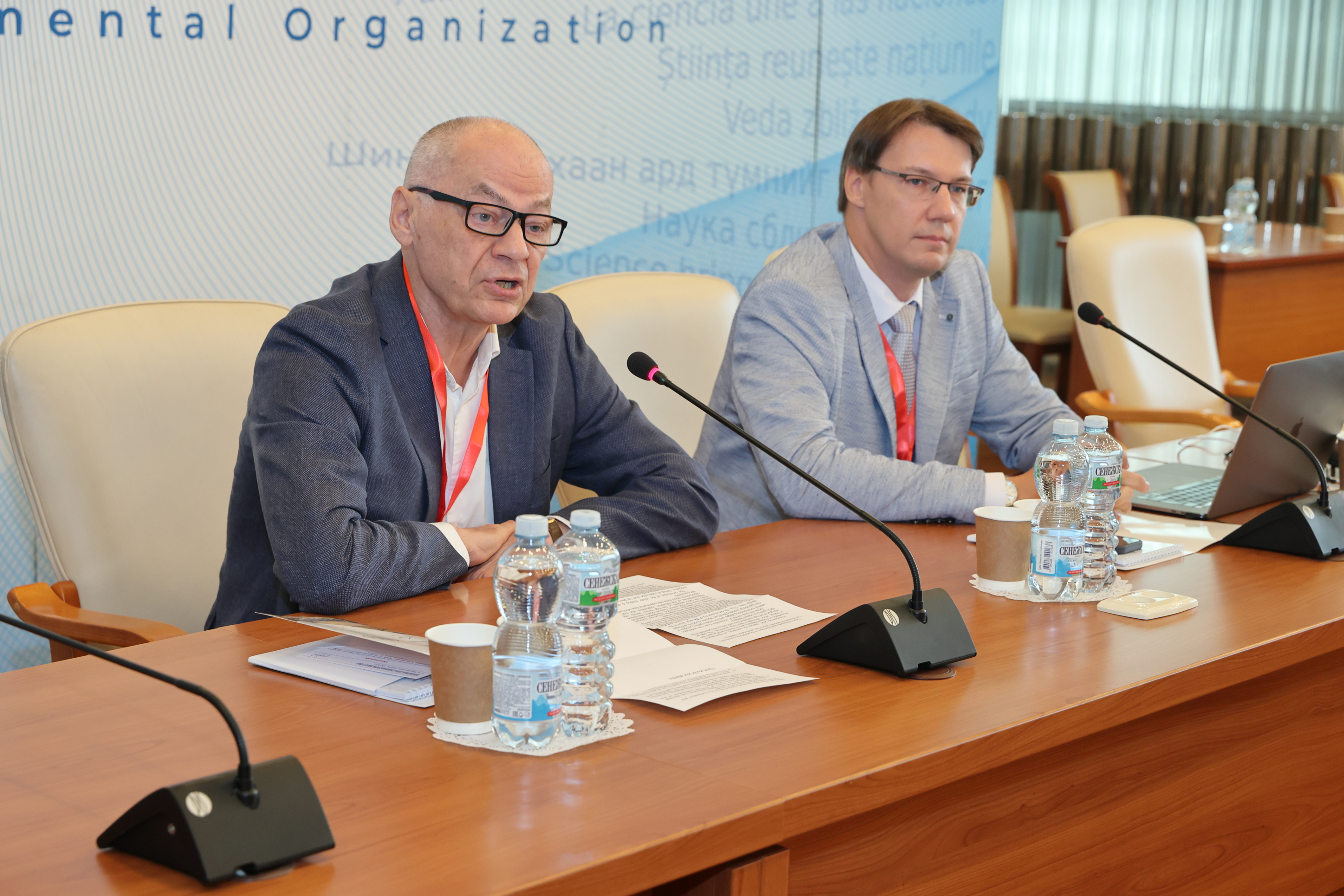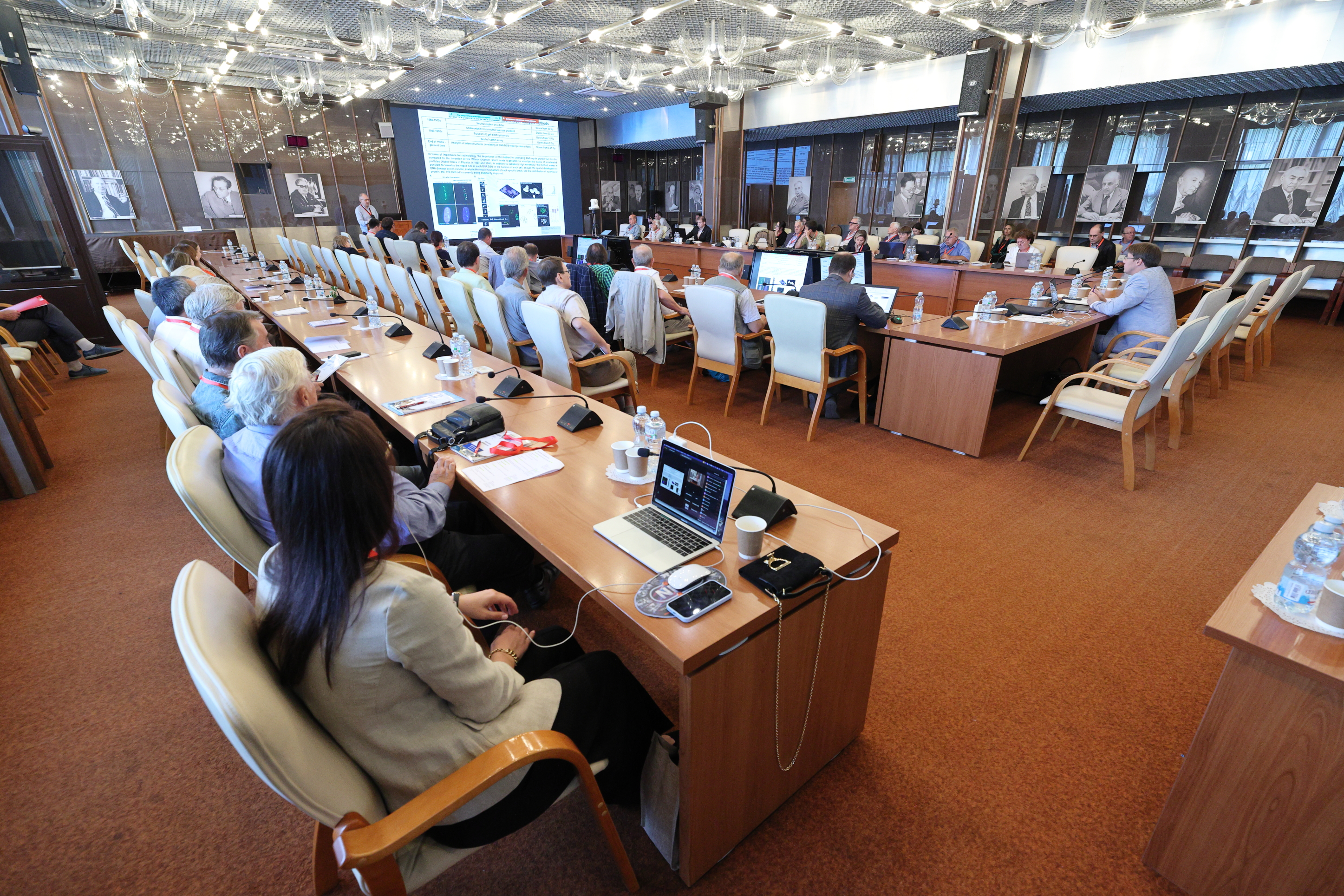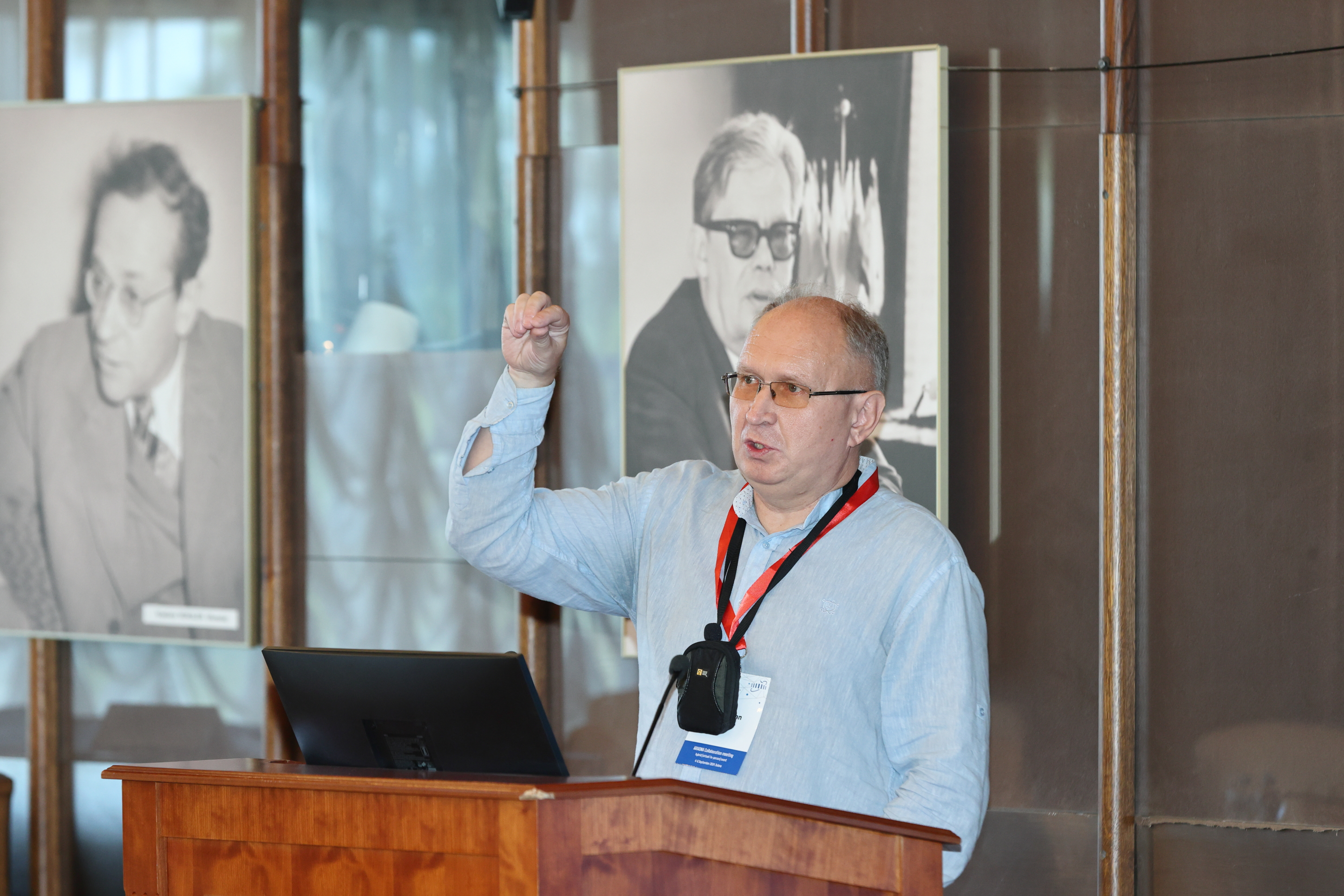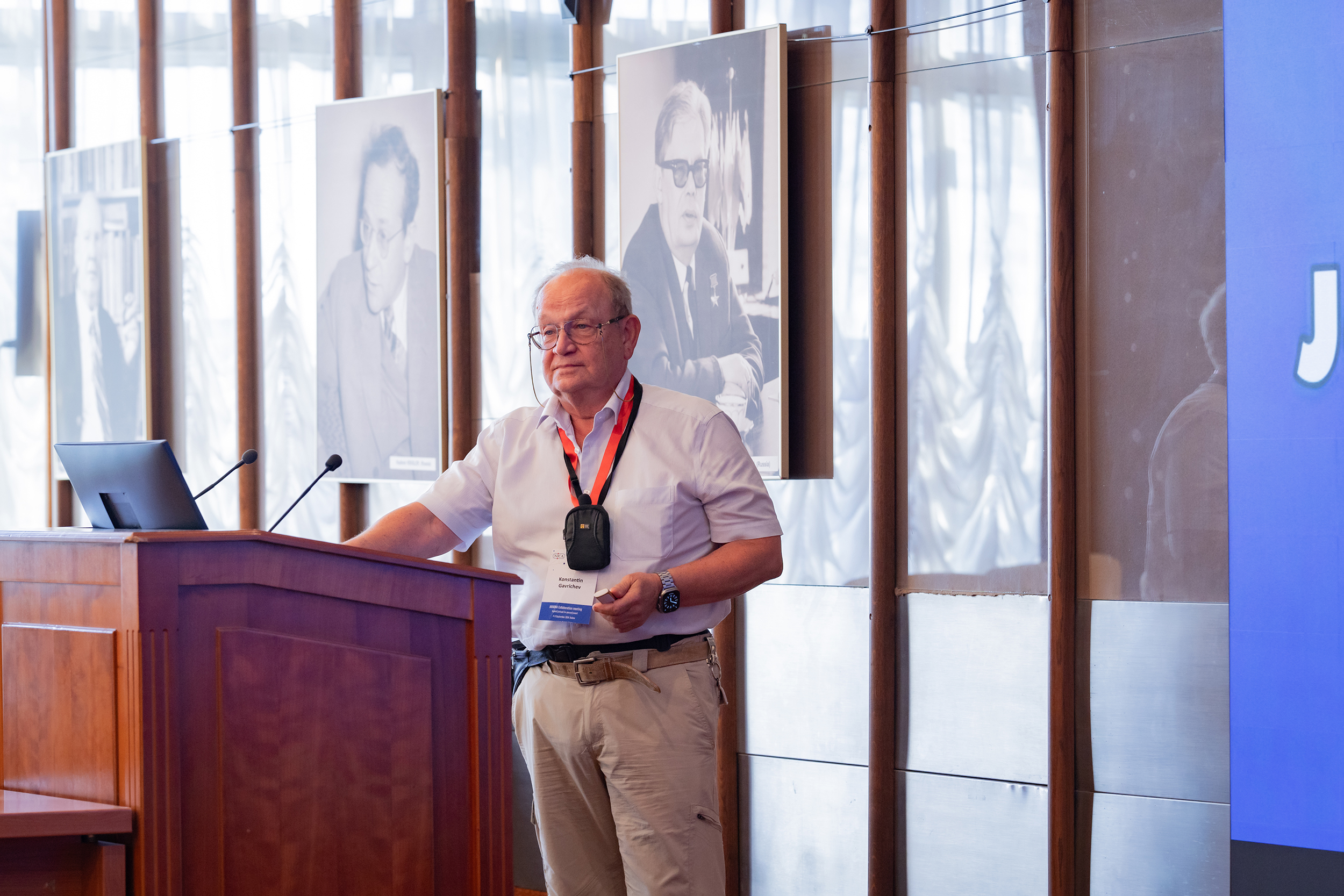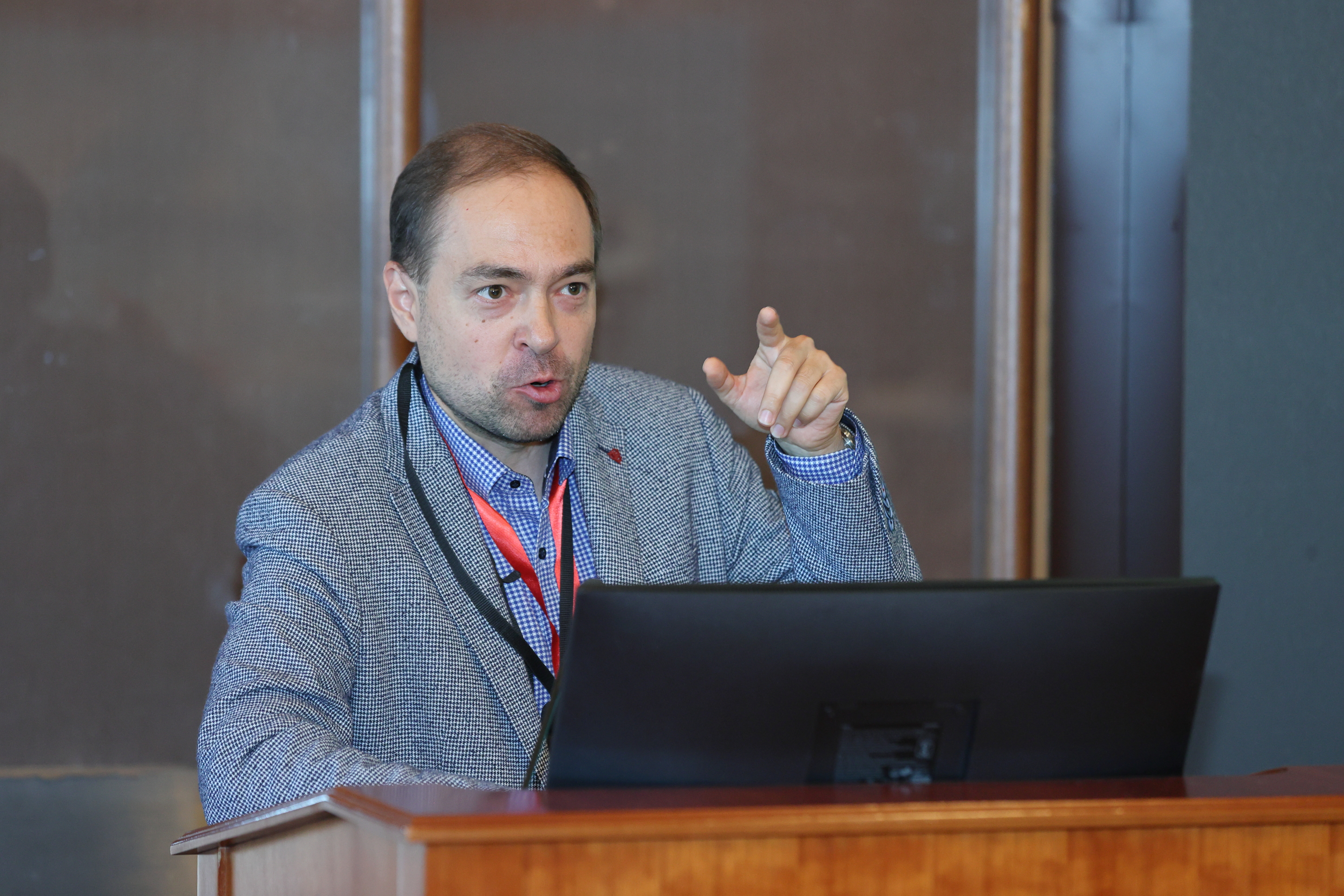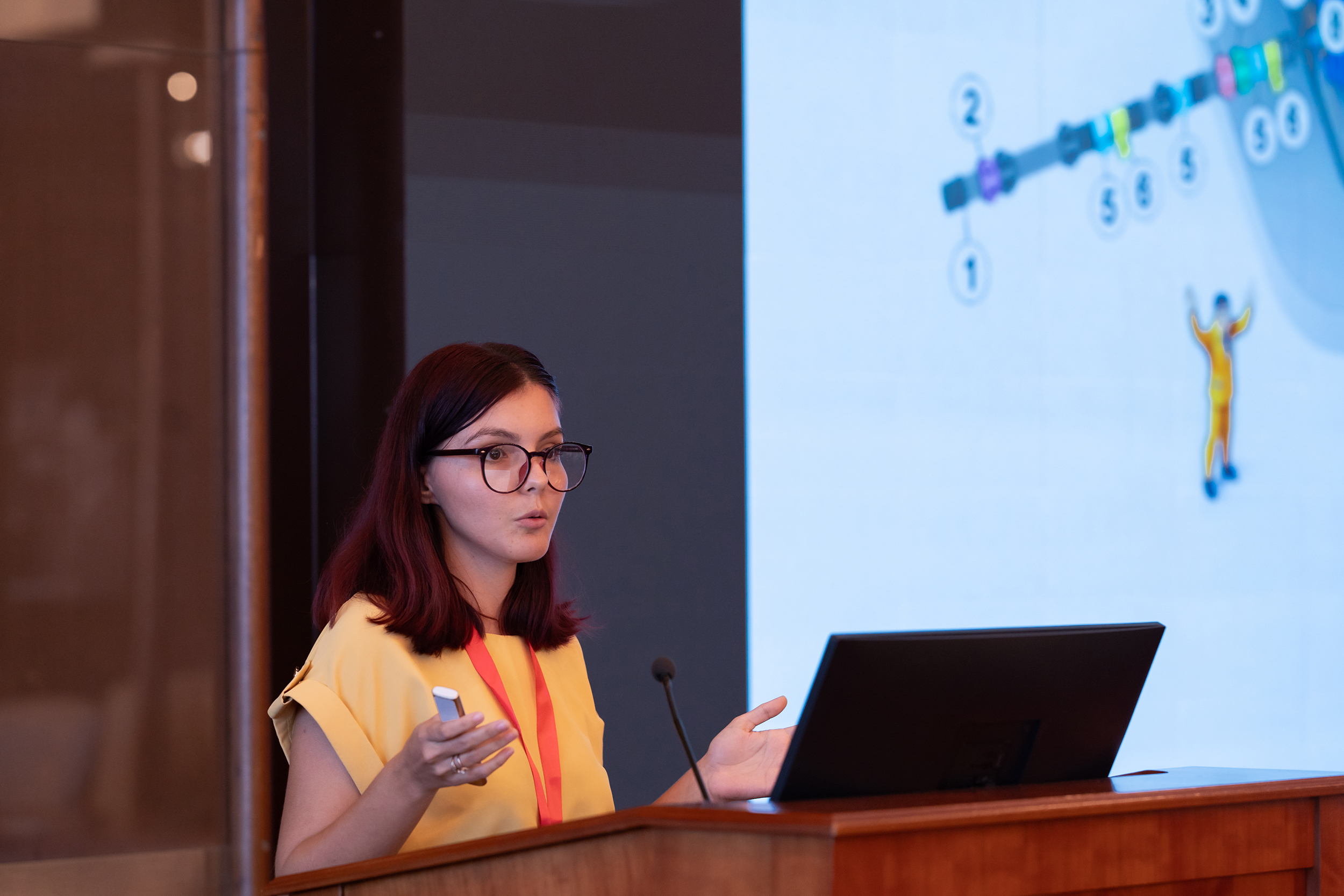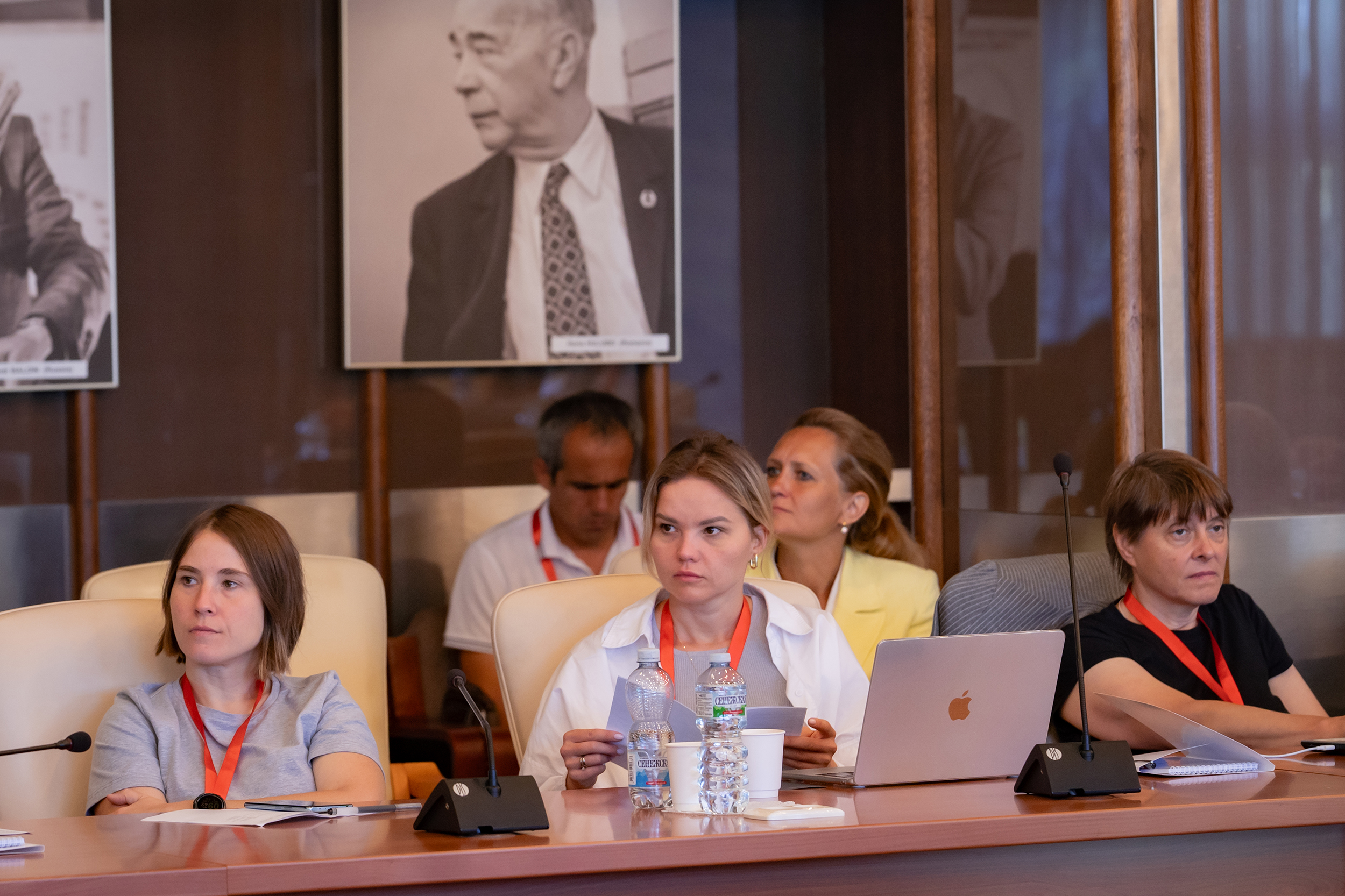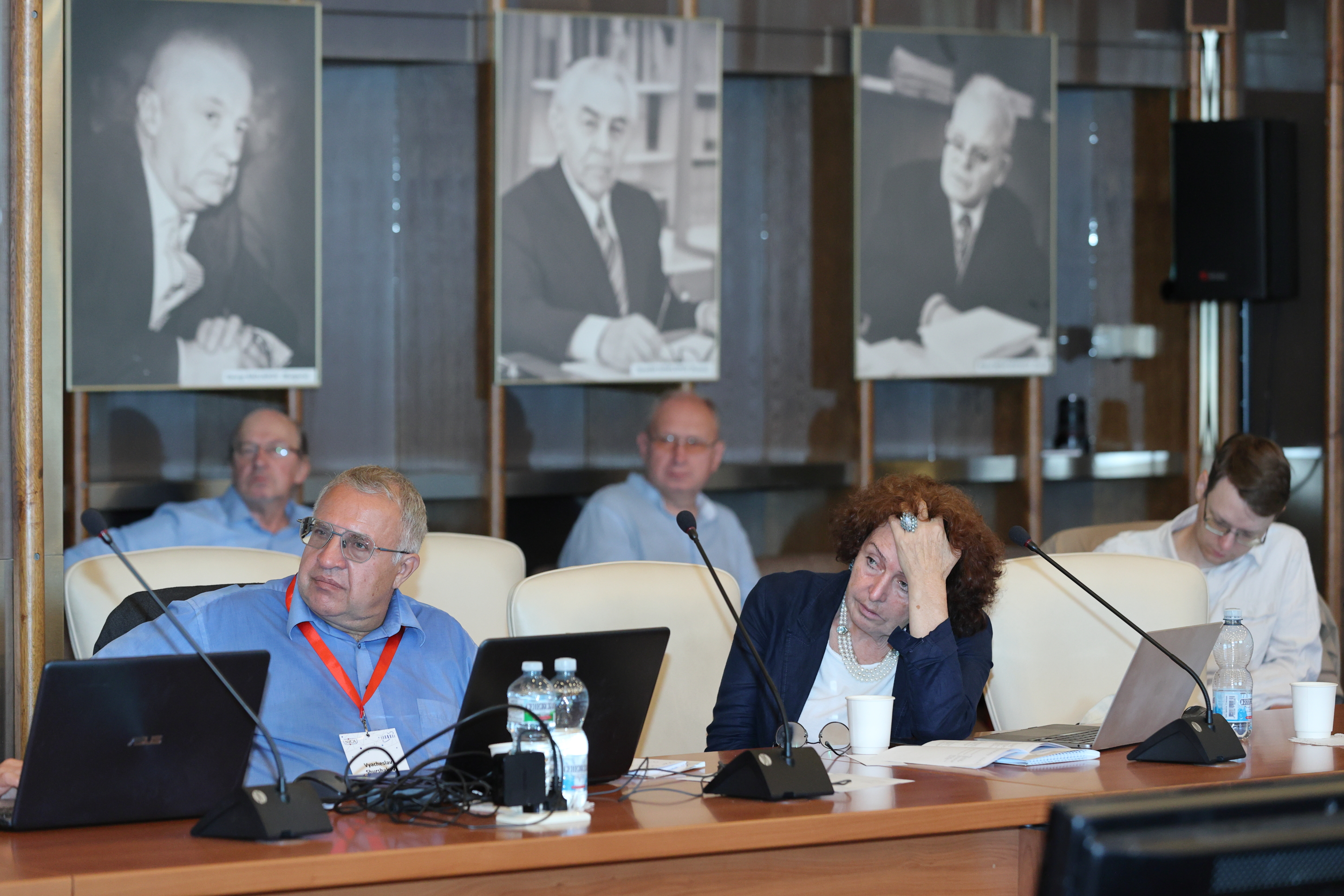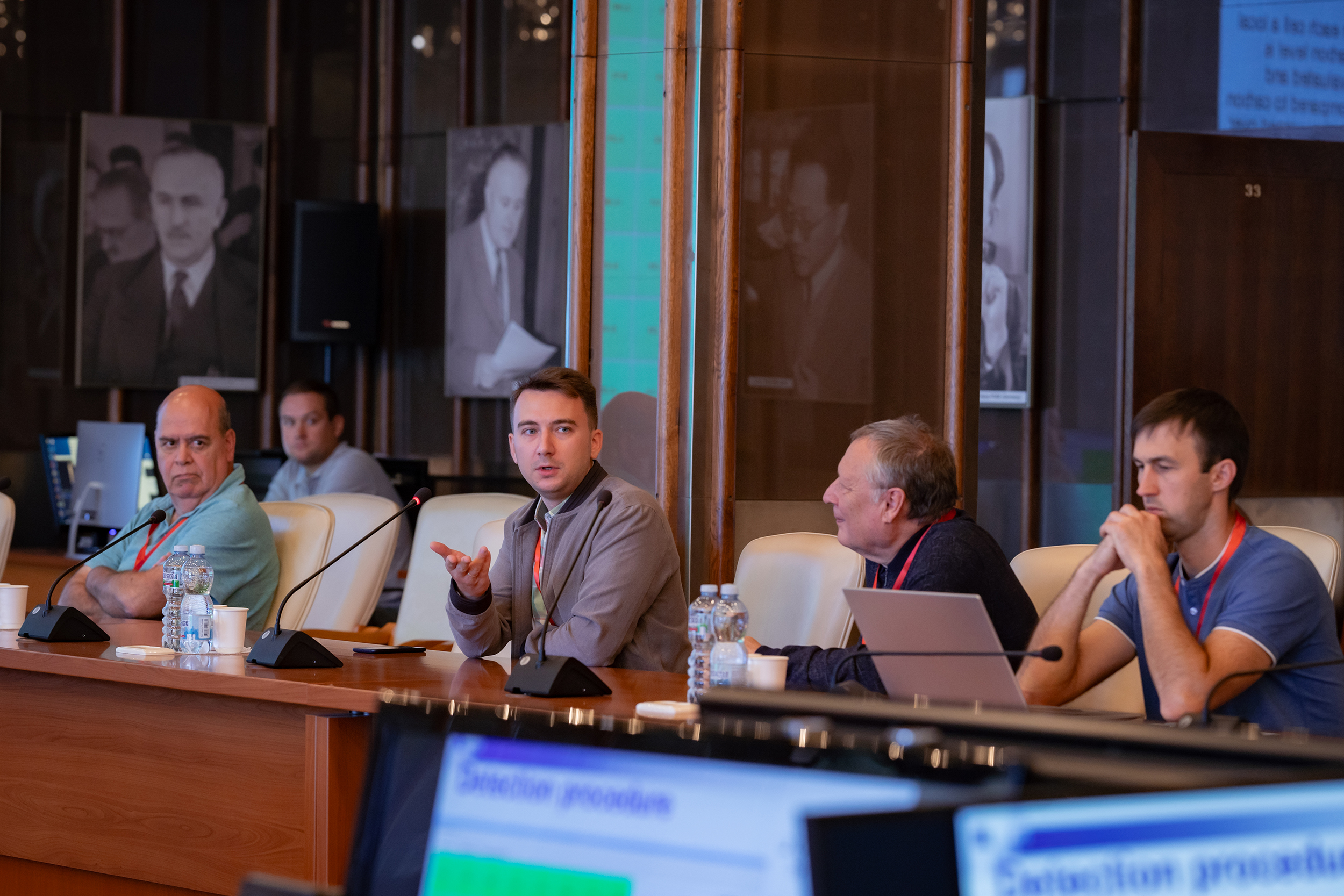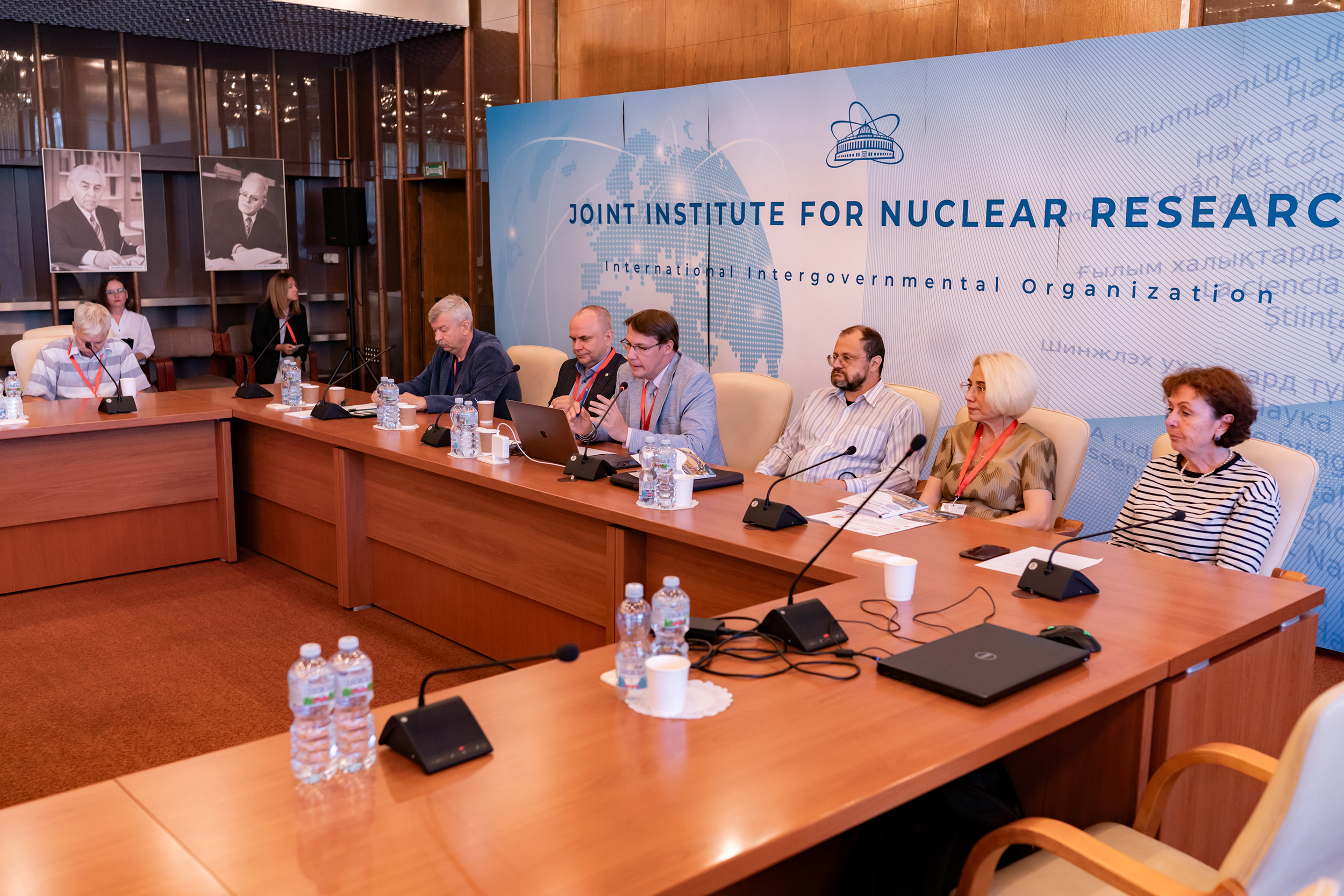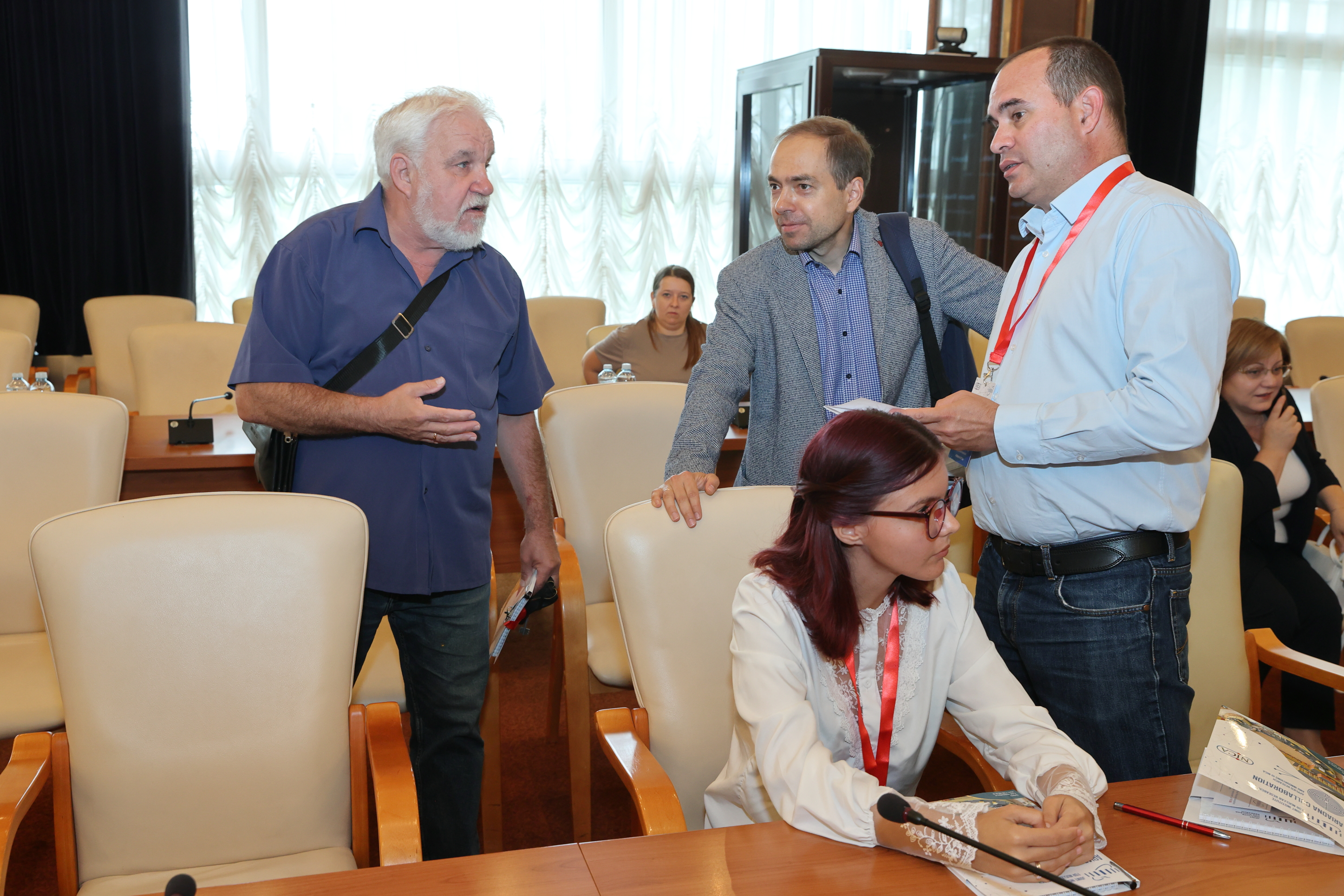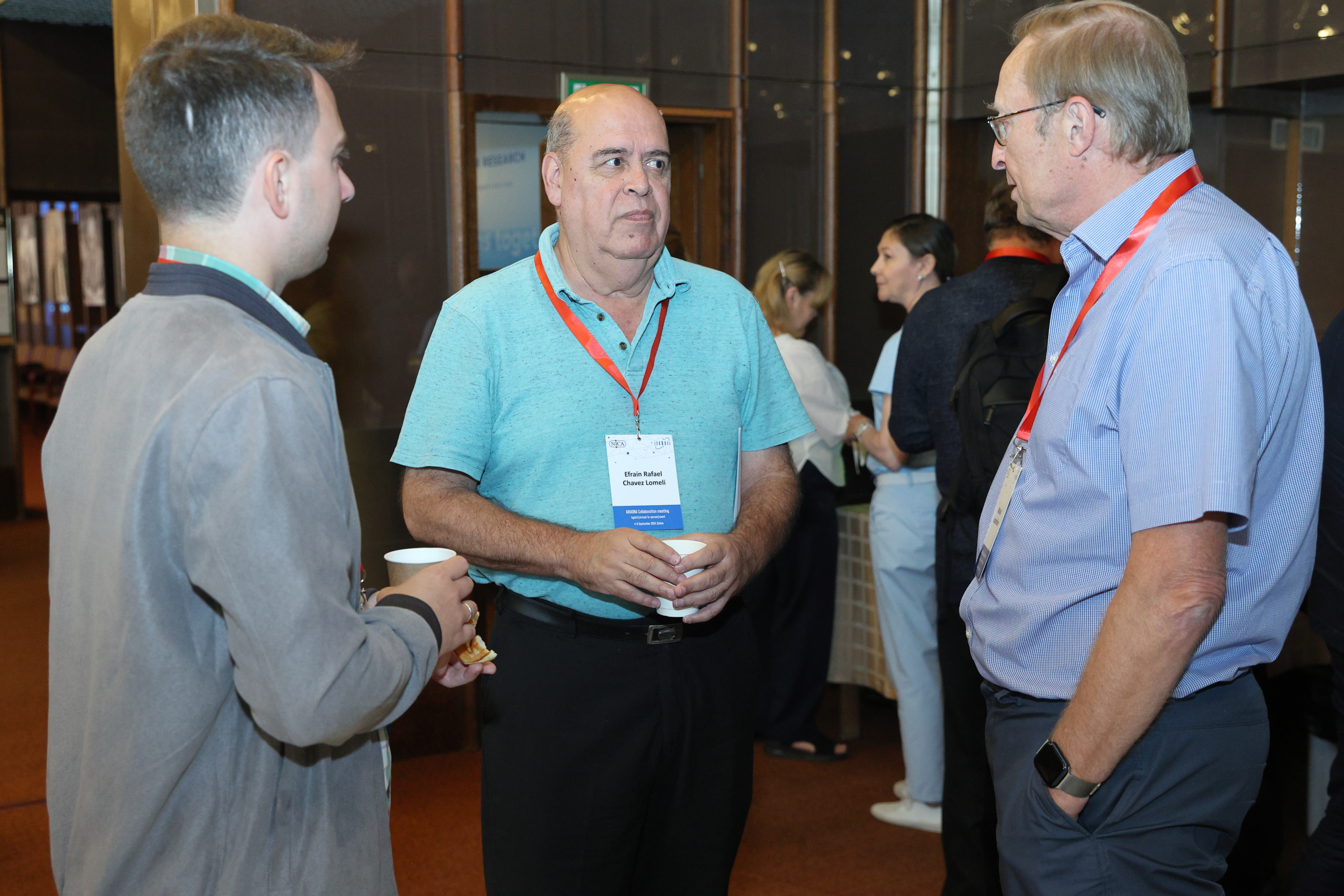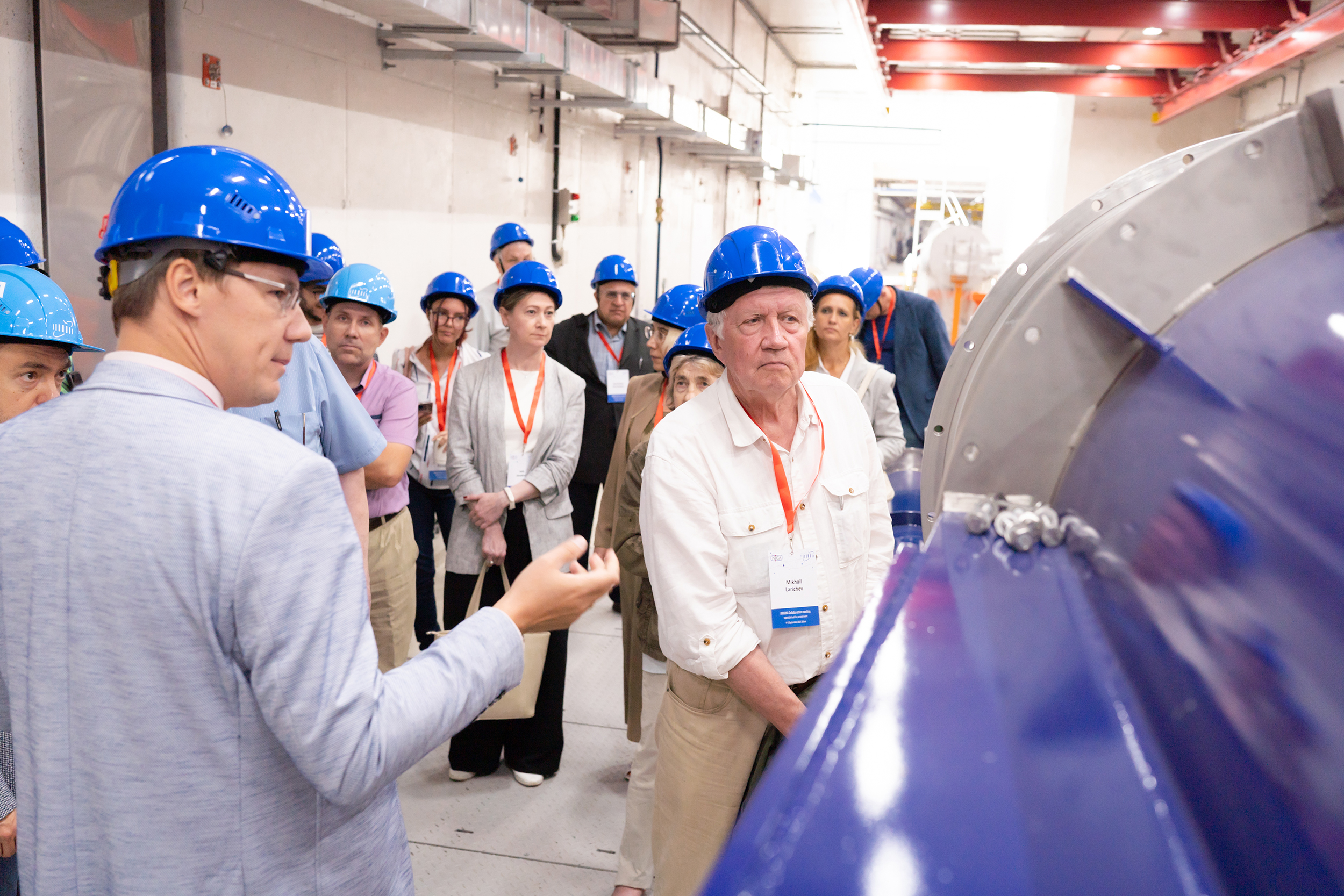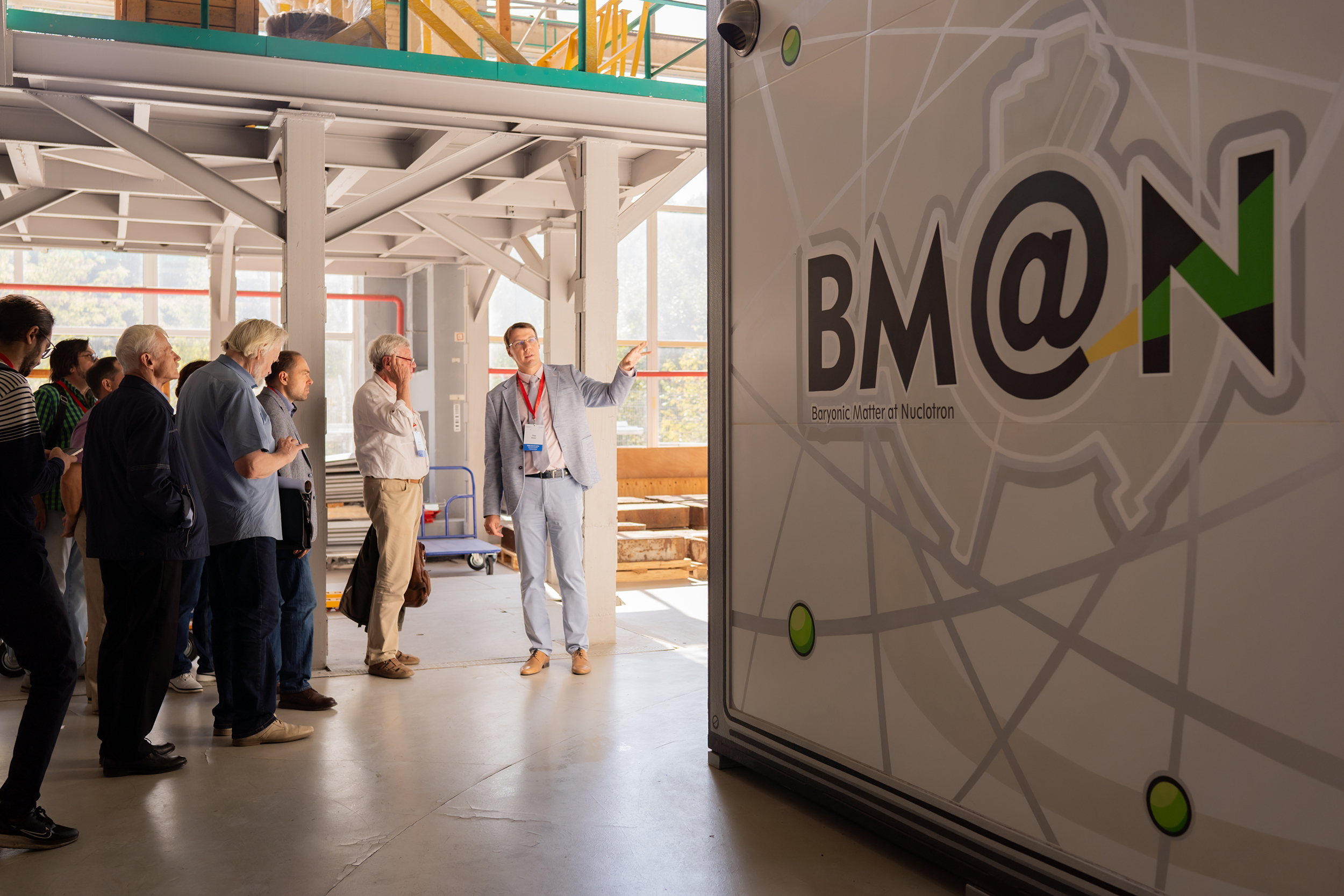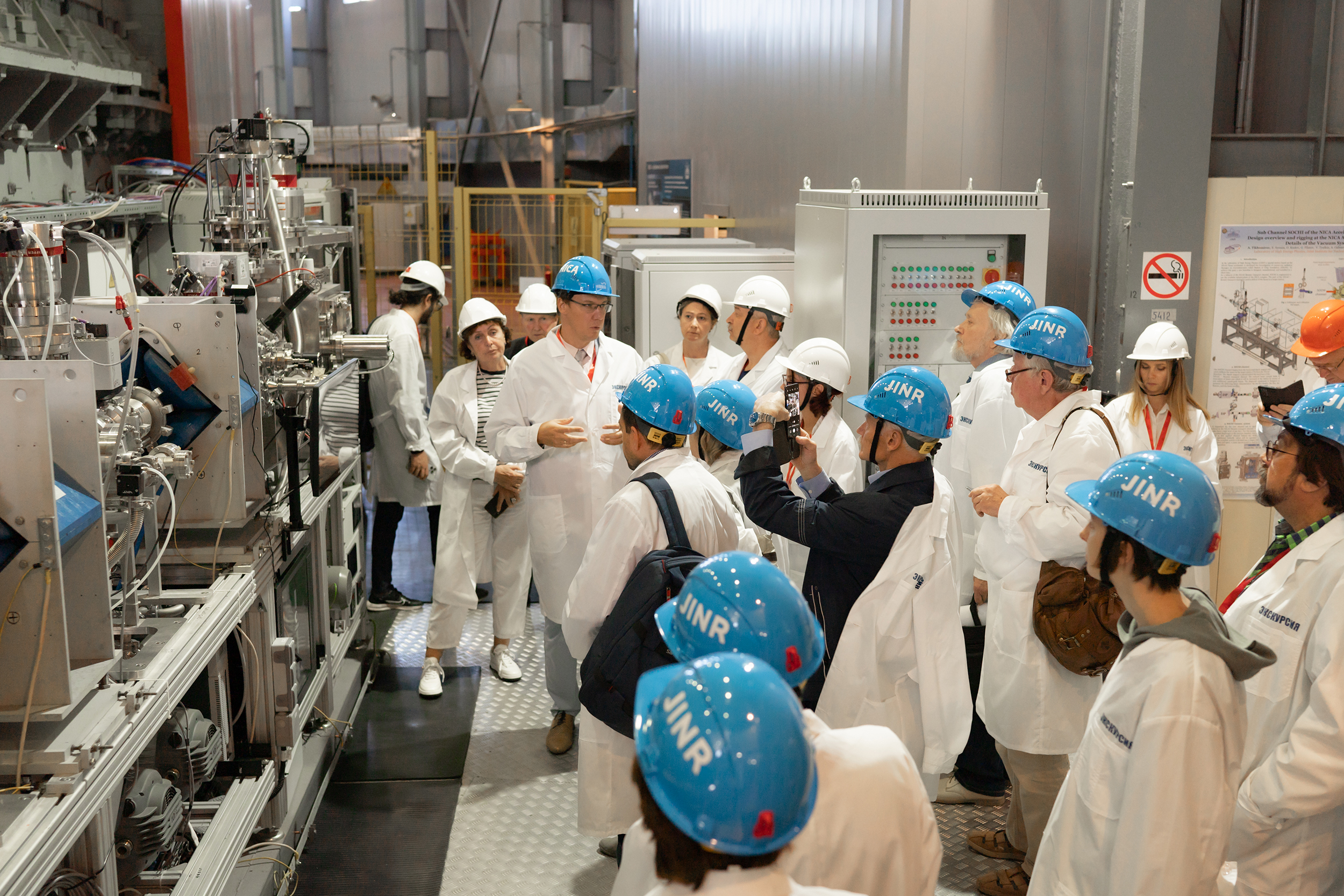Applied research at NICA Complex discussed in Dubna
News, 10 September 2024
From 4 to 6 September, the Joint Institute for Nuclear Research hosted the international ARIADNA Collaboration Meeting on Applied Research at the NICA Complex. The event brought together about 150 participants from 33 organizations and 15 countries, including Armenia, Belarus, Bulgaria, Cuba, Egypt, India, Japan, Kazakhstan, Mexico, Romania, Russia, South Africa, Turkey, Uzbekistan, Vietnam. The aim of the meeting was to discuss the scientific cooperation programme ahead of the session at the NICA Complex scheduled for 2025.
During the three days, the participants listened to 30 reports on the key areas of the research programme of the ARIADNA Collaboration, paid a working visit to the NICA Complex, and exchanged ideas on conducting experiments in the next session on accelerated ion beams.
JINR Vice-Director, NICA Project Leader Vladimir Kekelidze opened the meeting. He highlighted that the first international event on applied research and innovation at the NICA Complex took place in September 2021 and gathered about 300 scientists from the world’s leading research centres, which indicates the high interest of the scientific community in the opportunities that NICA provides in terms of applied research.
Vladimir Kekelidze noted that the NICA Project is ready for the start of experiments, including applied research on extracted beams in the designated infrastructure created by JINR. The acceleration session, during which the NICA Collider will be launched, is scheduled for 2025. “Unique beams in a wide energy and particle type range will be available for research in life sciences and biomedical applications, radiation materials science, radiation resistance testing of microelectronics, applied nuclear technologies, and other tasks. The ARIADNA Collaboration is expanding, and there is no doubt that this tendency will continue,” Vladimir Kekelidze concluded.
ARIADNA Collaboration Leader, Deputy Head of the VBLHEP JINR Department of Methodological Research and Innovation Oleg Belov presented a report on the status of the collaboration, including the most important events and the immediate tasks. Currently the cooperating organizations include 162 participants from 21 scientific centres; documents for the official accession of several more organizations are being prepared. Five stations for applied research have been created at the NICA Accelerator Complex, which will be able to operate in different energy ranges from 3.2 MeV/nucleon to 4 GeV/nucleon. At the end of 2021, the Station Of Chip Irradiation (SOCHI) was launched In December 2022, the prototype Target Station for Long-Term Exposure was built and tested, providing a unique opportunity for continuous operation on high-energy ion beams for up to several months in parallel with the BM@N Facility. Studies were carried out at both stations as part of the last commissioning run at the NICA Complex. The Setup for Investigation of Medical Biological Objects (SIMBO), the Irradiation Setup for Components of Radioelectronic Apparature (ISCRA), and the Station of High Energy Investigation in Nuclear Energetic (SHINE) are being prepared for commissioning.
In the 2022-2023 session, seven organizations completed the scientific programme at the Target Station for Long-Term Exposure and conducted research on radiation materials science, composite materials, and radiation modification of high-temperature superconductors.
A key element of the research infrastructure created by the ARIADNA members will be the renovated building of the Institute of Biomedical Problems of the Russian Academy of Sciences (IBMP RAS) in Dubna, which will house a target laboratory for modelling the effects of cosmic radiation on the NICA Complex beams. The building is expected to be commissioned in January 2025.
The scientific programme of the meeting included reports on a wide range of research related to the radiation safety of space flights. Speakers presented studies of the biological effect of heavy ions and discussed the opportunities for cooperating organizations to research damage in human DNA cells using the most modern molecular biological and morphological methods. A significant part of the reports was devoted to high-temperature superconductors (HTS): the study of the radiation resistance of HTS tapes and the creation and modification of innovative materials using heavy ions. The meeting participants got acquainted with reports on relativistic nuclear technologies, namely the ADSR Project.
Head of the Department of Space Radiation Safety of RAS Institute of Biomedical Problems Vyacheslav Shurshakov commented on the results of the meeting. He noted the importance of the ARIADNA infrastructure for solving problems of radiation safety of space flights, including the plans to create the new Russian Orbital Station, that will rotate in a high-latitude orbit with greater radiation exposure compared to the ISS.
“Manned spaceships have not yet flown in such orbits. In the NICA Project, we have concentrated our efforts on selecting the right protective materials for the astronauts. The ARIADNA Project will involve a series of studies on the selection of such materials,” Vyacheslav Shurshakov said. – But this is not the only issue. In order to effectively protect astronauts, it is also necessary to correctly and reliably measure the dose they receive. To do this, physicists are calibrating scientific equipment. The ARIADNA Project will allow us to check on the ground how correct and accurate our devices will be in space by simulating cosmic irradiation. This will provide us with more precise information on the doses that astronauts receive and protect their health more reliably.”
Sharing his impressions of participating in the meeting, a researcher at Physics Institute of National Autonomous University of Mexico Efrain Rafael Chavez Lomeli expressed interest in joint work on biomaterials science as one of the areas of applied research with prospects for development in Mexico.
“It is a very impressive programme, very impressive facilities that you have here, so I really hope that we can gather the Mexican community around this project and the NICA Complex. Now it is very relevant to bring these facilities to the Mexican medical and biological community and then help them understand what are the opportunities that using these high energy beams brings to the research. I need to show them that doors are open here for the joint work,” Efrain Rafael Chavez Lomeli emphasised.
Summarising the topics of the life sciences section, Head of Department of Experimental Radiobiology and Radiation Medicine at the Burnasyan Federal Medical Biophysical Centre of the Federal Medical-Biological Agency of Russia, Head of the Group of Radiation Biochemistry of Nucleic Acids at the RAS Semenov Federal Research Centre for Chemical Physics Andreyan Osipov stressed the application of the upcoming results in the ion therapy of malignant neoplasms.
“The expectations of the ARIADNA Project are very high, since there are many gaps in heavy ion radiobiology. This is due to the difficulty of conducting such experiments. The effects of X-ray radiation and gamma radiation are well studied, and there are many works on proton radiation and neutrons. Speaking of ions, there are mostly studies of carbon, and very few on iron,” he said. “The main focus of our work on NICA will be on the experiments with cell cultures. We will study different cell cultures of normal cells: human mesenchymal stem cells, human fibroblasts, peripheral blood lymphocytes, and even tumour cells, namely cells of the tumours that are difficult to treat, such as glioblastoma or non-small cell lung cancer.”
ARIADNA Collaboration Leader, Deputy Head of the VBLHEP Department of Methodological Research and Innovation Oleg Belov summed up the results of the working meeting, “The main result of our meeting was the establishment of a balanced scientific programme of the collaboration for the near future, including the session at the NICA Complex scheduled for 2025. We have clearly defined several research areas. The first one is related to the issues of radiation protection in space and modelling the biological effects of cosmic radiation on biological objects. We are placing special focus on the complementary nature of the ground work programme and the participation of ARIADNA team members in flight experiments. The second large area is radiation materials science, including the issues of developing new materials and testing them on heavy ion beams. A prominent topic of the ARIADNA programme is radiation modification of high-temperature superconductors and the study of their resistance. The third area is the ADSR Project on applied nuclear technologies with the participation of our colleagues from the Member States of the Institute. This area is also developing dynamically.”
On the final day of the meeting, the participants visited the NICA Accelerator Complex. They visited the synchrophasotron building, where the Station Of Chip Irradiation is located at the output of the injection complex, the MPD Hall, Building 205, which houses the Target Station for Long-Term Exposure located at the site of the BM@N Facility, and the sample preparation site.
The meeting concluded with a round table, at which the members discussed organizational issues of the Collaboration, the preparation of the first publications on behalf of the Collaboration, and summed up the results of the meeting. Representatives of the ARIADNA member organizations shared their views on the further cooperation development and the areas they prioritise. The participants of the collaboration were interested in the idea of publishing works in the new JINR scientific journal, Natural Science Review, which they were informed about by a representative of the working group on the creation of the journal Alexander Nezvanov.
At the closing of the meeting, speakers, session moderators, and the event’s organizers received a commendation from the participants, along with a suggestion to promptly continue discussing the initiatives put forward.
